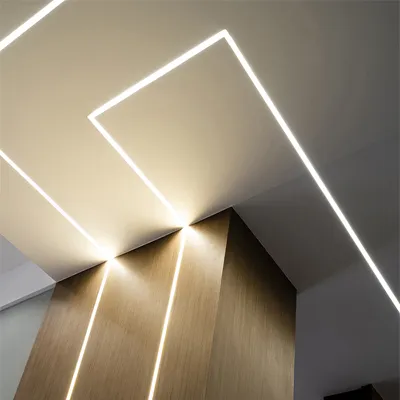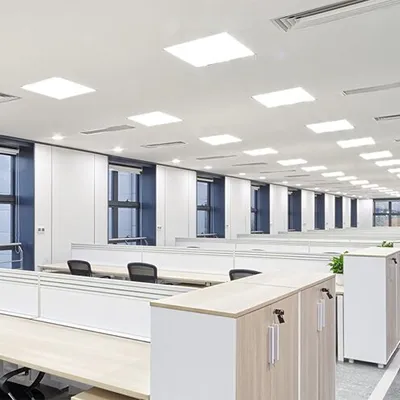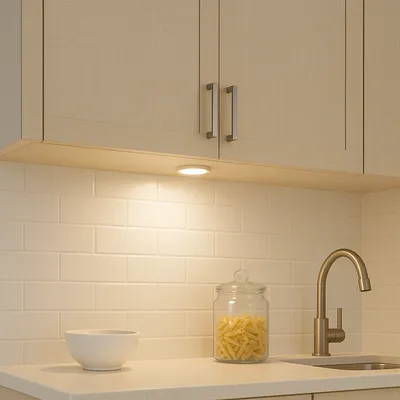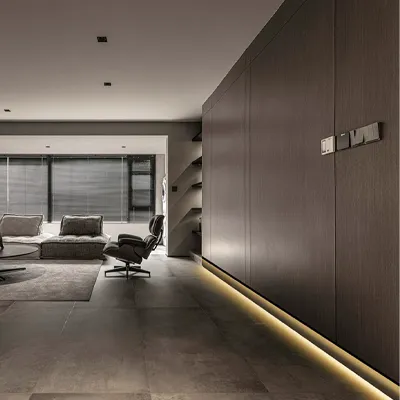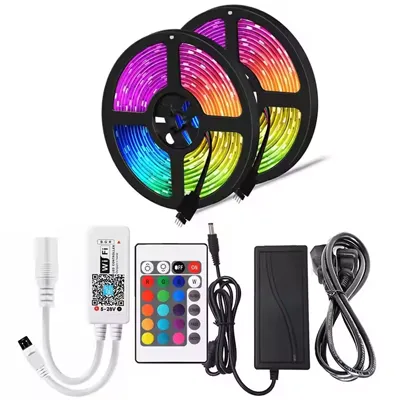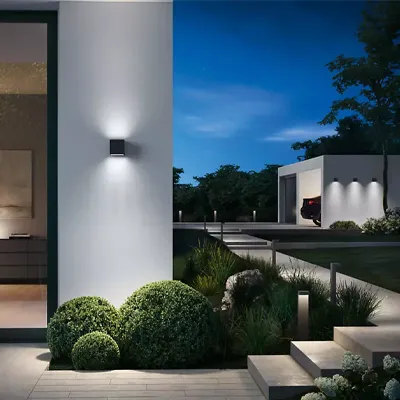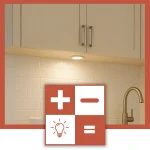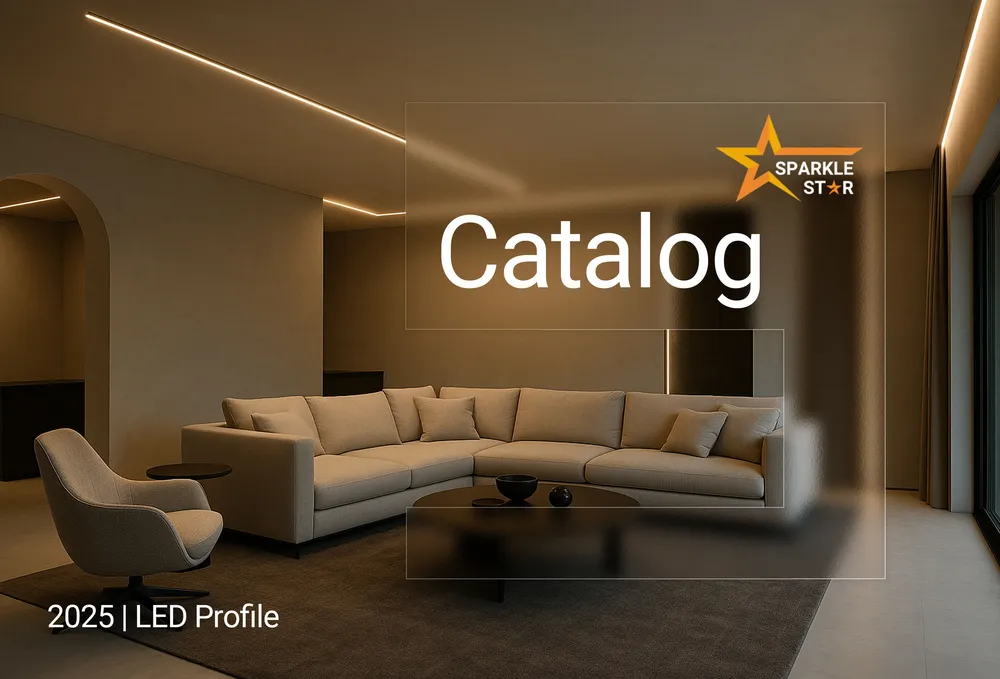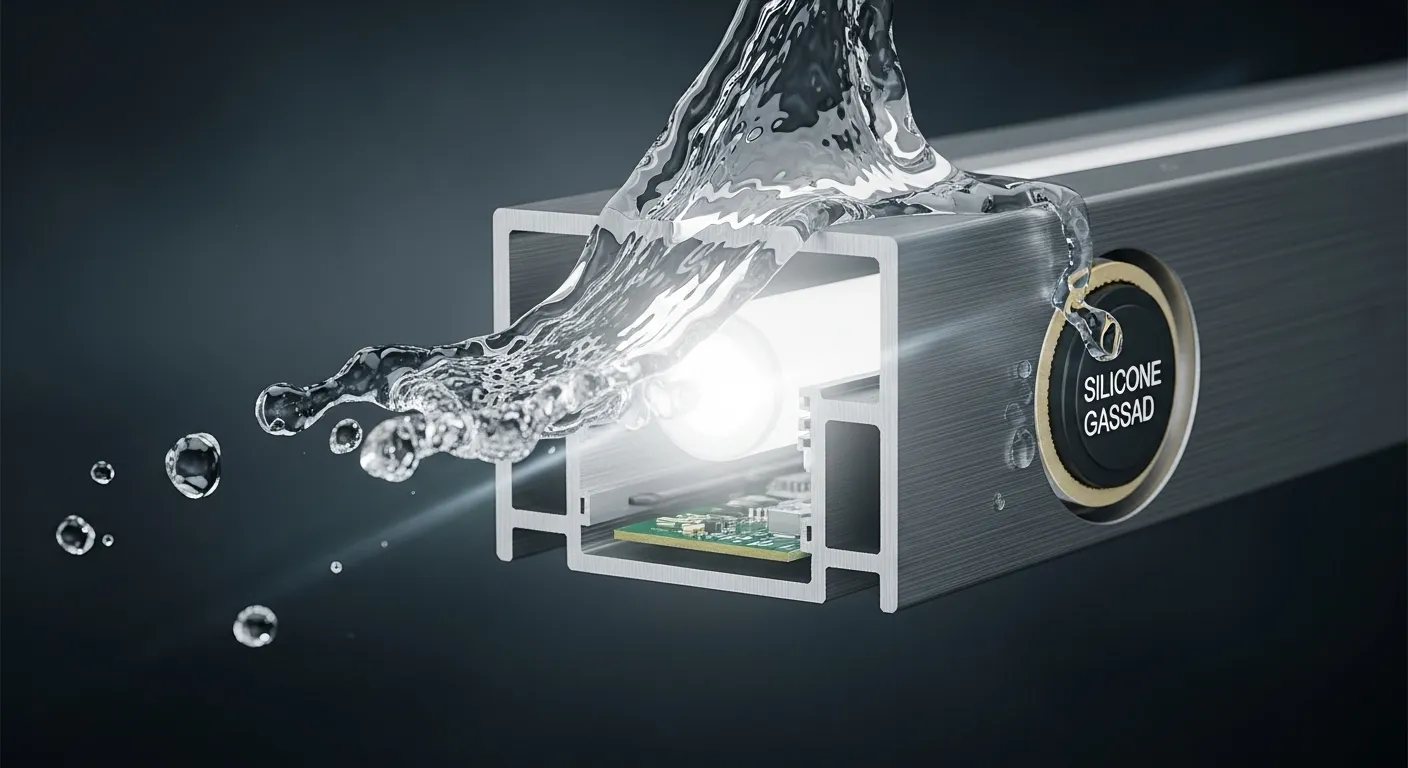
A standalone LED profile is not waterproof. Waterproofing is a system-level property defined by the complete and correct assembly of the channel, diffuser, end caps, and seals. Long-term performance in wet or outdoor environments depends on three specific factors:
- Component Integration: A sealed enclosure must be created using all system parts.
- Certified IP Rating: The final assembly must be certified to an Ingress Protection rating suitable for the application.
- Installation Integrity: The system must be installed correctly to protect all potential points of failure.
This analysis provides the technical details required to specify and install these systems for durable, reliable operation.
The Waterproofing System
A frequent and costly error in specification is equating a "waterproof LED strip" with a durable, wet-location lighting solution. True, long-term reliability is not a feature of any single component. It is a system property achieved only through the meticulous integration of parts engineered to work in concert.
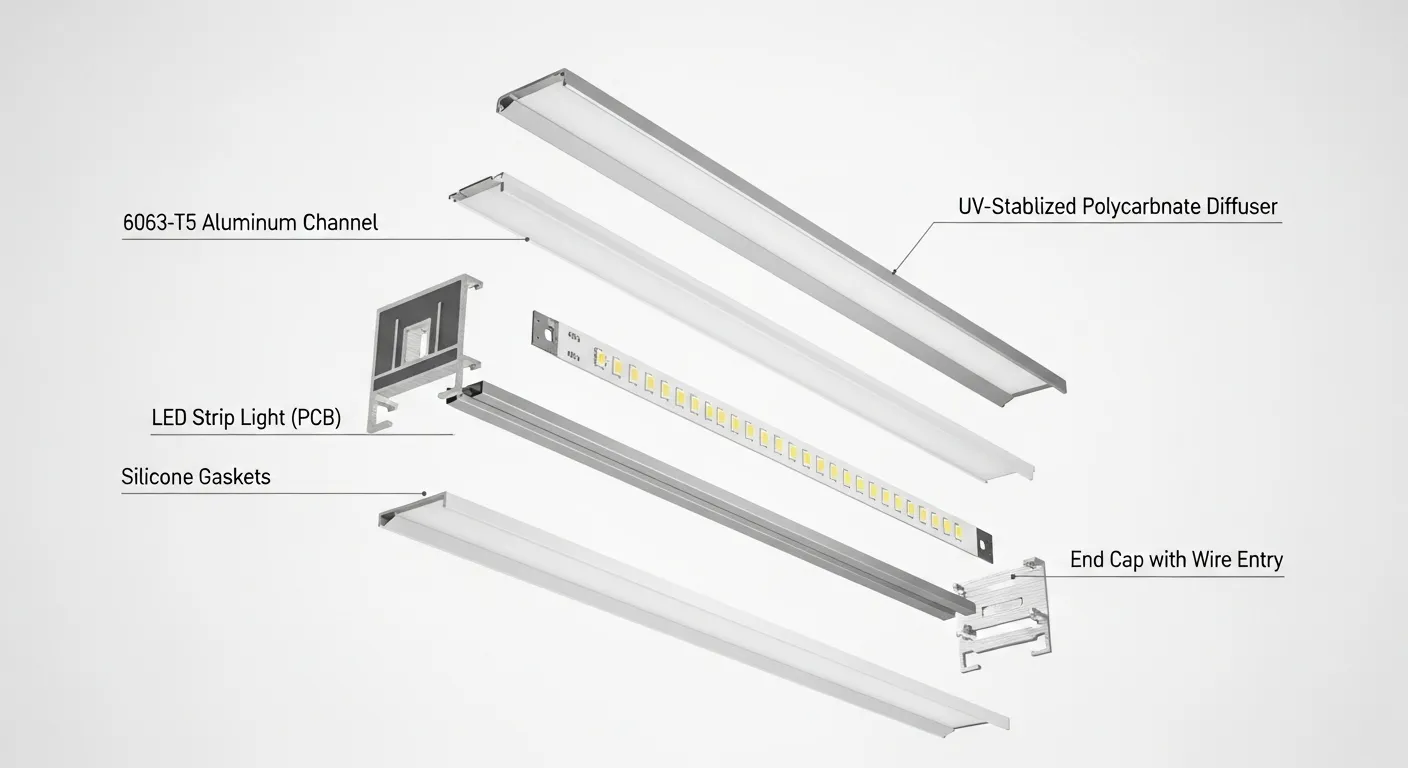
Why a Profile Alone Fails
A bare aluminum profile, typically an extrusion of 6063-T5 aluminum, is an open channel. While its anodized finish provides excellent corrosion resistance, it offers zero protection against liquid ingress. Its primary functions are to provide a rigid housing and, critically, to act as a heat sink. It is a structural and thermal component, not a sealing one.
The "Weakest Link" Principle
The final IP rating of any field-assembled fixture is governed by its single most vulnerable point. A system can contain an IP68-rated submersible strip, but if the end cap is sealed with a method that only provides IP65 protection, the entire fixture is an IP65 fixture. Every interface—the diffuser-to-profile seal, the gasket compression, and especially the wire entry points—must meet or exceed the target rating.
Industry Insight: The Unsealed Profile Trap
A common but dangerous practice is placing an IP67-rated strip inside an unsealed profile, assuming the strip's own protection is sufficient. This is a design flaw. The profile will trap water from rain and condensation, which then corrodes connectors and degrades adhesives. The profile, intended as a protective element, becomes a water trap that accelerates failure.
Factory vs Field Assembly Risks
Specifying a complete, factory-assembled, and certified fixture places the burden of performance and liability on the manufacturer, who operates in a controlled environment. Assembling components on a job site creates a new, uncertified fixture under uncontrolled conditions. This action effectively voids individual component warranties for that application and transfers the full liability for any subsequent failure directly to the specifier and installer.
Choosing the Correct IP Rating
The Ingress Protection (IP) code, defined by standard IEC 60529, is the definitive global language for enclosure sealing. It is a certification based on rigorous, standardized testing. For wet environments, the key distinctions are summarized below.
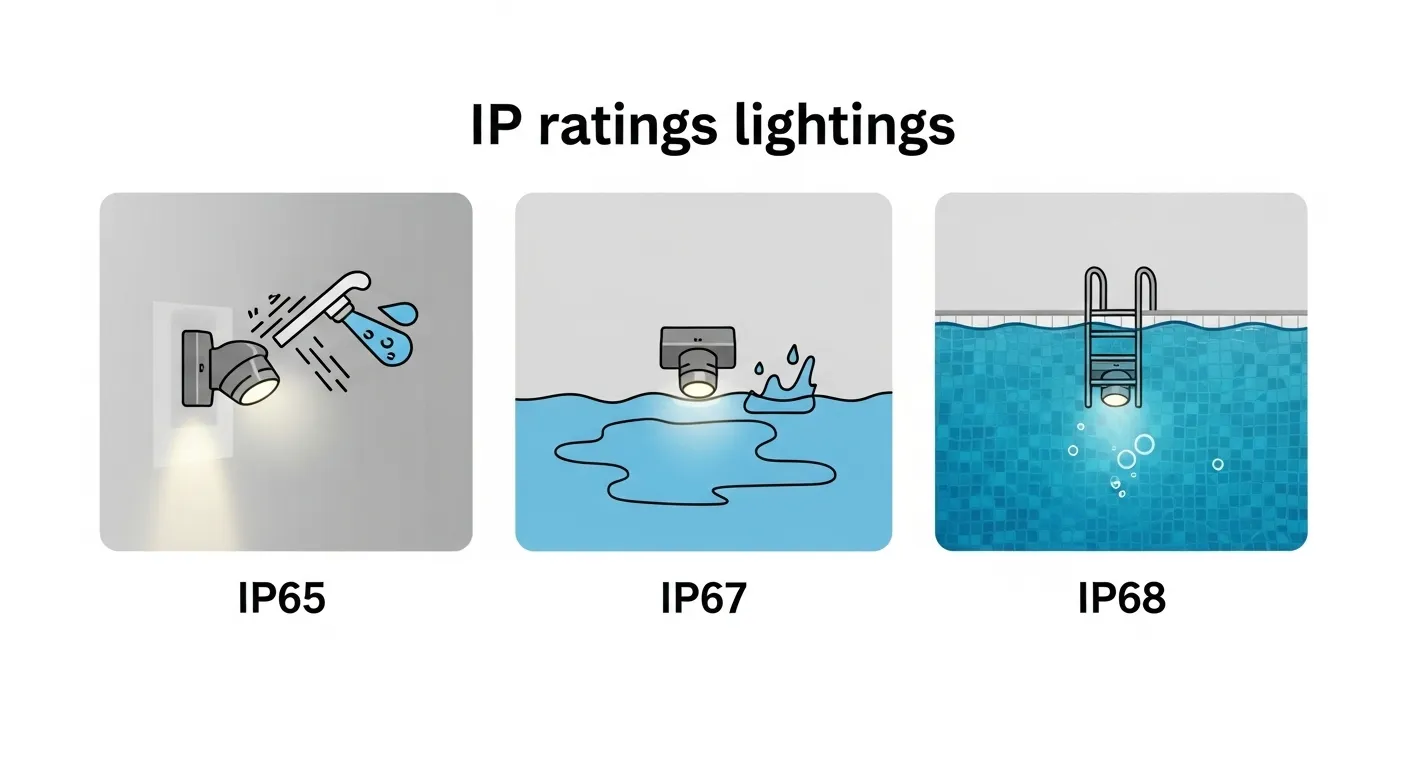
Rating | Liquid Protection | Standardized Test Conditions | Typical Application Environment |
|---|---|---|---|
IP65 | Water Jets | Low (Brittle, can crack) | Facades, soffits, bathrooms, kitchens. |
IP67 | Temporary Immersion | Protected against low-pressure jets from a 6.3mm nozzle. | In-ground lighting, docks, areas with poor drainage. |
IP68 | Continuous Submersion | Conditions defined by manufacturer; must exceed IP67. | Swimming pools, fountains, marine installations. |
IP65 for Water Jets
An IP65-rated system is certified to be dust-tight and to withstand low-pressure water jets projected from a 6.3mm nozzle from any direction. This is the baseline specification for general outdoor locations exposed to rain and cleaning jets and for indoor wet locations.
IP67 for Temporary Immersion
An IP67 rating guarantees protection against the effects of temporary immersion in water, tested under standardized conditions of 1 meter depth for 30 minutes. This is the non-negotiable specification for in-ground fixtures and any area subject to temporary flooding or puddling.
IP68 for Continuous Submersion
This rating signifies protection against long-term immersion under conditions defined explicitly by the manufacturer, which must be more severe than IP67. The IEC standard does not set a universal depth or time. Therefore, accepting an "IP68" claim without demanding the manufacturer's specific test data (e.g., "tested to 5 meters for 24 hours") is a critical specification error.
Material Selection for Durability
The IP rating certifies a fixture's resistance to ingress at the time of testing. Long-term durability, however, is dictated by the chemical and physical properties of its materials and their ability to withstand constant environmental assault.
Profile Corrosion Resistance
The standard profile material, 6063-T5 aluminum, offers excellent thermal conductivity and is protected by an anodized finish. In highly corrosive environments like coastal or industrial areas, this is insufficient. For these applications, a marine-grade alloy like 5083 or 316 stainless steel is mandatory to prevent pitting and failure.
Industry Insight: The Limits of Salt Spray Testing
Specifiers should be wary of reliance on the ASTM B117 salt spray test. Extensive research shows it has a poor correlation to real-world atmospheric corrosion. Data from cyclic corrosion tests like ISO 12944-9, which better replicate actual weather cycles, is a far more reliable benchmark for performance.
Diffuser UV and Impact Ratings
The diffuser is the system's primary shield. While PMMA (acrylic) is sometimes used, UV-stabilized polycarbonate (PC) is the superior choice for any outdoor or high-reliability application due to its exceptional impact strength and resistance to yellowing and embrittlement from solar radiation. For fixtures in high-traffic or in-ground locations, the mechanical strength, defined by the IK rating (EN 62262), is critical. An IK08 rating or higher is necessary to withstand pedestrian and light vehicle traffic.
Epoxy vs Silicone Sealing
For maximum protection, fixtures are often potted. The choice of potting compound is a critical engineering decision. While both epoxy and silicone provide a seal, their performance differs dramatically in one key area: Water Vapor Transmission Rate (WVTR).
Property | Epoxy Resin | Silicone Resin |
|---|---|---|
Water Vapor Permeability | Extremely Low | High |
Scratch Resistance | Lower (More prone to scratches) | Flexible, Elastic |
Optical Clarity | Good | Acetic Acid (in acid-cure types) |
Industry Insight: The Silicone "Water Pump" Effect
Silicone's high permeability to water vapor creates a significant failure mode. In environments with daily temperature cycles, a silicone-potted fixture can act like a pump, drawing in humid air as it cools. This vapor then condenses into liquid water inside the supposedly sealed fixture, leading to corrosion. Epoxy, with its near-zero WVTR, creates a true hermetic seal and prevents this phenomenon, making it superior for high-humidity applications.
Furthermore, only neutral-cure silicones should ever be used near electronics, as acid-cure types release corrosive acetic acid.
Thermal Management in Sealed Profiles
Sealing a fixture to make it waterproof fundamentally alters its thermal dynamics. This is a critical factor that is frequently overlooked, leading to premature failure even in perfectly sealed systems.
How Sealing Eliminates Airflow
In an unsealed fixture, heat dissipates via two mechanisms: conduction through the aluminum body and convection from air flowing through and around the profile. A hermetically sealed fixture completely eliminates internal convective cooling. The system becomes almost entirely reliant on conduction to transfer heat from the LED's PCB, through the profile body, and into the ambient environment.
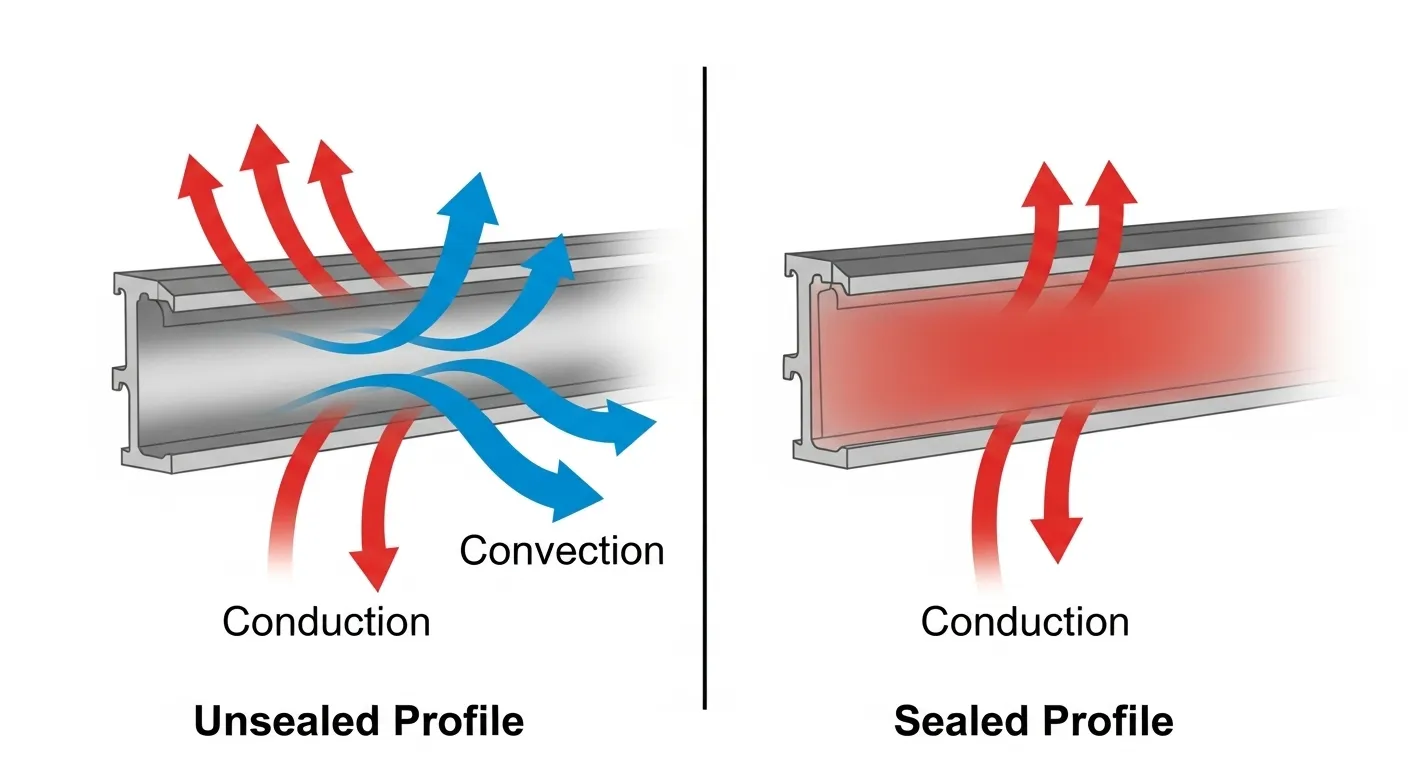
The Risk of Premature LED Failure
If the conductive path is insufficient for the heat load, the LED's junction temperature will rise. This leads to rapid lumen depreciation (dimming), color shift, and a catastrophic reduction in operational lifespan. A 10°C increase in junction temperature can reduce an LED's life by as much as 30-50%.
Selecting for Heat Dissipation
The aluminum profile is not just a housing; it is a functional heat sink. Its thermal performance is determined by its mass, surface area, and the quality of contact with the LED strip. Installing a high-power LED strip (e.g., >15 W/m) into a slim, low-mass profile, especially in a sealed configuration, is a specification for failure.
Answering Common Scenarios
Applying these technical principles allows for precise recommendations for specific, high-intent user questions.
Can I use LED profiles in a shower?
Yes, provided the system is rated IP65 or higher to protect against water jets. The profile must be anodized aluminum to prevent cosmetic corrosion. Critically, all end caps and wire entries must be meticulously sealed with a high-quality, mold-resistant, neutral-cure silicone sealant during installation.
What profile is best for outdoor decks?
For decks and patios, specify a system rated at least IP67. This protects against temporary puddling from heavy rain. The diffuser must be UV-stabilized polycarbonate to prevent sun damage. All connectors and power supplies must also be rated for outdoor use.
Are there profiles for in-ground use?
Yes. These are highly specialized systems that require a minimum rating of IP67, with IP68 being strongly recommended. They must also have a high impact rating of IK08 or higher. The profile should be heavy-duty aluminum or stainless steel, and the entire assembly is typically epoxy-potted for maximum durability.
Which materials survive coastal areas?
Standard materials will fail rapidly. A system for coastal or marine environments requires a minimum IP67 rating, a profile made from marine-grade 5083 aluminum or 316 stainless steel, and 316 stainless steel for all mounting hardware to prevent galvanic corrosion. Due to high humidity and salt spray, epoxy potting is the only reliable sealing method.
Installation and Maintenance
A perfectly specified, high-performance system can be rendered useless by improper installation. Long-term reliability is decided at the point of assembly. Meticulous attention to detail is not optional; it is a requirement for system survival.
Sealing Entry Points Correctly
The wire entry point is the most common source of failure. A generous bead of high-quality, 100% neutral-cure silicone sealant must be applied to the end cap before fitting it into the profile. It is critical that the sealant fully encapsulates the wire where it passes through the cap. Using low-grade acrylic caulk or acid-cure silicone is a guaranteed path to premature failure, as these materials will crack, lose adhesion, and corrode electronics.
Protecting Electrical Connectors
All electrical connections made in the field must be independently waterproofed. For the highest level of protection, solder connections should be sealed with adhesive-lined heat-shrink tubing. This tubing contains an inner layer of thermoplastic adhesive that melts when heated, creating a robust, watertight, and vibration-resistant seal around the joint. Using simple electrical tape is entirely insufficient for wet environments.
Avoiding Common Failure Points
Beyond sealing, several factors lead to failure. The most common is thermal mismanagement, where an under-specified profile causes the LEDs to overheat. Another is mechanical stress, caused by forcing a profile into a tight space or failing to provide expansion gaps. Lastly, improper power supply, such as using an indoor-rated driver for an outdoor application, will lead to rapid system failure.
Strategic Summary
The initial capital expenditure for a high-performance, factory-certified waterproof system is often higher than for field-assembled components. However, a Total Cost of Ownership (TCO) analysis reveals the long-term financial benefit. A robust system minimizes operational expenditures by drastically reducing costly maintenance, component replacement, and potential collateral damage from water ingress.
Specifying correctly is an investment in reliability. By treating waterproofing as a complete system, demanding certified performance data, scrutinizing material specifications, and mandating rigorous installation protocols, you are not just buying a light fixture. You are ensuring safety, performance, and longevity, thereby protecting your project, your client, and your professional reputation.


